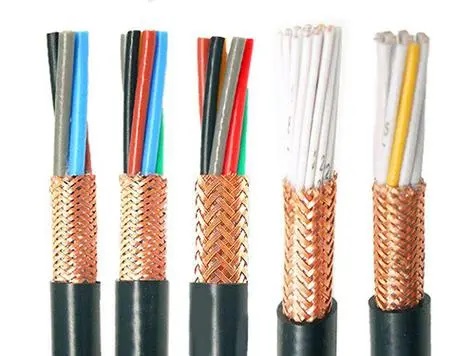Exploring the World of Medium Voltage Power Cables
Introduction
Medium voltage power cables play a crucial role in the transmission and distribution of electrical energy across various industries and infrastructures. These cables are designed to carry voltages ranging from 1kV to 35kV, making them suitable for a wide range of applications. In this comprehensive guide, we will delve into the world of medium voltage power cables, exploring their types, construction, applications, and key considerations for installation and maintenance.
Types of Medium Voltage Power Cables
Medium voltage power cables are available in various types, each designed to meet specific requirements based on factors such as voltage rating, insulation material, and environmental conditions. The most common types of medium voltage power cables include:
1. XLPE (Cross-linked Polyethylene) Cables: XLPE cables are widely used for medium voltage applications due to their excellent electrical properties, high thermal resistance, and resistance to moisture and chemicals. These cables are suitable for both underground and overhead installations.
2. EPR (Ethylene Propylene Rubber) Cables: EPR cables are known for their flexibility, durability, and resistance to environmental factors such as UV radiation and oil. They are commonly used in industrial applications and outdoor installations.
3. PILC (Paper-Insulated Lead Sheathed) Cables: PILC cables feature paper insulation and lead sheathing, providing high dielectric strength and mechanical protection. While less common today due to the advent of newer technologies, PILC cables are still found in certain legacy installations.
4. MI (Mineral Insulated) Cables: MI cables consist of conductors surrounded by magnesium oxide insulation and a metal sheath, offering excellent fire resistance and mechanical protection. These cables are often used in high-temperature and hazardous environments.
Construction of Medium Voltage Power Cables
Medium voltage power cables are typically composed of several components that work together to ensure safe and efficient power transmission. The key components of a medium voltage power cable include:
1. Conductor: The conductor is the core component of the cable responsible for carrying the electrical current. Conductors are usually made of copper or aluminum due to their high conductivity and flexibility.
2. Insulation: The insulation layer surrounds the conductor and serves to electrically insulate it from the surrounding environment. Common insulation materials for medium voltage power cables include XLPE, EPR, and paper.
3. Shielding: Shielding layers are used to protect the cable from electromagnetic interference (EMI) and provide an additional level of insulation. Metallic shields such as copper tape or wire are commonly employed for this purpose.
4. Sheath: The outer sheath of the cable provides mechanical protection and insulation from external factors such as moisture, chemicals, and physical damage. Sheaths can be made of PVC, PE, or other materials depending on the application requirements.
Applications of Medium Voltage Power Cables
Medium voltage power cables find widespread use in a variety of applications across different industries and sectors. Some common applications of medium voltage power cables include:
1. Power Distribution: Medium voltage power cables are extensively used for distributing electrical power from substations to industrial facilities, commercial buildings, and residential areas.
2. Renewable Energy: Medium voltage power cables play a crucial role in connecting renewable energy sources such as solar farms and wind turbines to the grid, enabling the efficient transmission of clean energy.

3. Infrastructure Projects: Medium voltage power cables are essential for powering infrastructure projects such as transportation systems, water treatment plants, and telecommunications networks.
4. Oil and Gas Industry: Medium voltage power cables are deployed in the oil and gas industry for powering drilling operations, refineries, and offshore platforms where reliable electrical supply is critical.
Key Considerations for Installation and Maintenance
Proper installation and maintenance are essential for ensuring the reliable performance and longevity of medium voltage power cables. Here are some key considerations to keep in mind:
1. Installation Environment: Consider the installation environment, including factors such as temperature variations, moisture levels, and exposure to chemicals or mechanical stress. Choose cables with suitable insulation and sheathing materials to withstand these conditions.
2. Cable Routing: Plan the cable routing carefully to minimize bends, twists, and sharp edges that could cause mechanical damage or stress on the cable. Use appropriate cable supports and clamps to secure the cables in place.
3. High flex life rubber sheathed cables and Joints: Proper termination and jointing techniques are critical for maintaining the integrity of the cable system. Follow manufacturer guidelines and industry best practices when installing terminations and joints to ensure reliable connections.
4. Testing and Inspection: Regular testing and inspection of medium voltage power cables are essential for detecting potential faults or degradation early on. Conduct routine insulation resistance tests, partial discharge measurements, and visual inspections to identify any issues that may arise.
Conclusion
Medium voltage power cables are an integral part of the electrical infrastructure, enabling the efficient transmission and distribution of electrical power across various industries and applications. By understanding the different types, construction, applications, and key considerations for installation and maintenance of medium voltage power cables, stakeholders can ensure the reliable and safe operation of their electrical systems. Stay informed about the latest developments in medium voltage power cable technology and best practices to optimize the performance of your power distribution network.